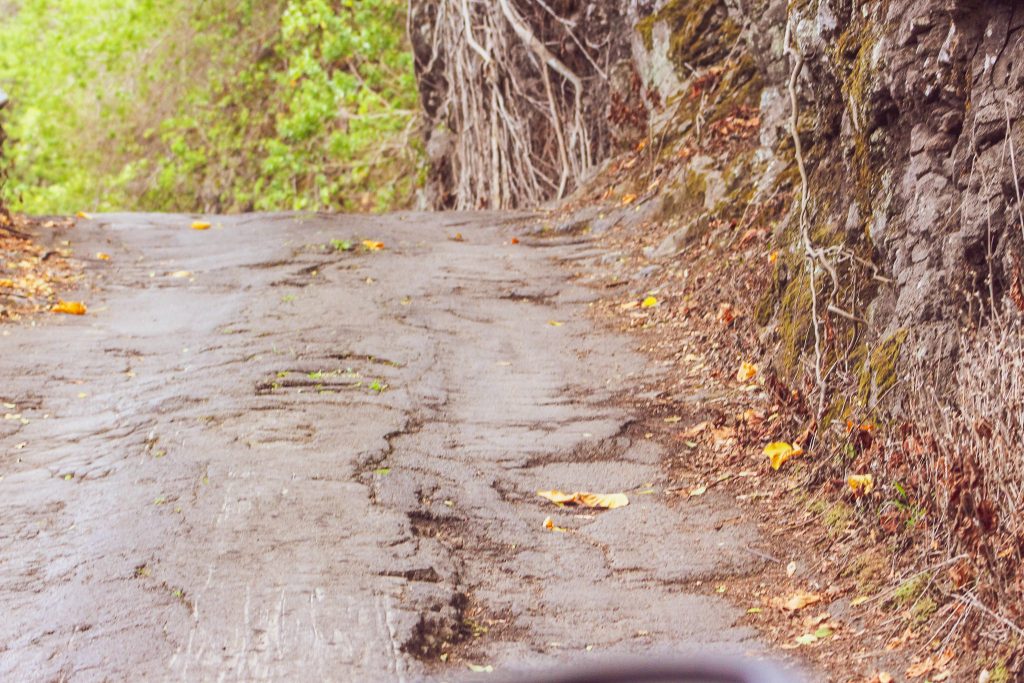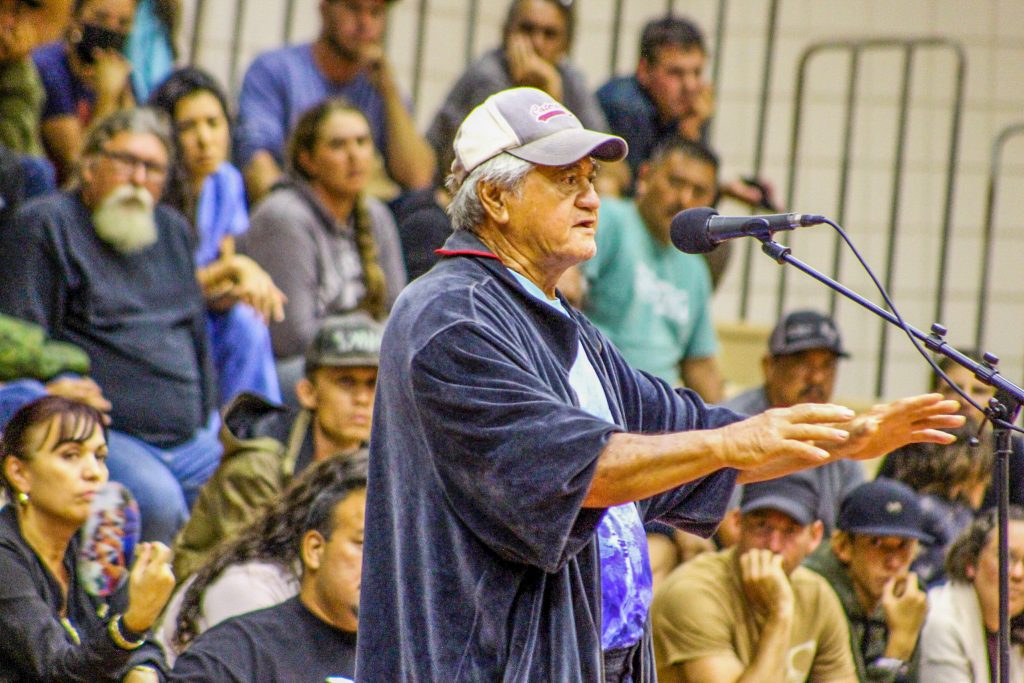County to unveil repair plans for dangerous Waipiʻo Valley Road at public meeting Oct. 26

Over the past year, the narrow, steep Waipiʻo Valley Road has been the focus of a geotechnical engineering evaluation, an emergency closure, a lawsuit, a partial reversal of the emergency closure, community meetings and protests.
But as the debate continues about who has the right to use the 1.5-mile County-owned pavement that goes into the valley, the fact remains: the road is dangerous.
And it has been for years. But access was not limited until Feb. 25, when Hawaiʻi County Mayor Mitch Roth issued an emergency proclamation to close the road to pedestrians and most vehicles due to the finding of unsafe conditions by a geotechnical engineering evaluation.
Since the proclamation, no work has been done on the road to make it safer. But the County said it has spent those months working on repair plans.
On Oct. 26, the County will reveal those repair and mitigation plans during a community meeting from 5:30 to 7 p.m. at the Honokaʻa Gym at 45-541 Lehua St. in Honokaʻa.
During the public presentation, county officials will discuss a rockfall and slope instability mitigation and conceptual design summary report by Haley & Aldrich, an environmental and geotechnical consulting company. The Hawai’i County Department of Public Works hired the firm to conduct the geotechnical engineering evaluation under their Hart Crowser division.
The cost of the estimated road repairs was slated at $6 million at a previous community meeting on Oct. 5. County officials also said the first phase of repairs would be for the upper side of the road and could take about five to six weeks. Other road repairs would come in other phases and could take several years.
For years, Protect Waipi’o Valley, a group of taro farmers and valley residents, has been working with the county to address safety concerns. They also plan to work with the county about how the repairs will be done considering the residents need access to the road and so do the farmers for their day-to-day work of harvesting and delivering taro.
At least three rockfalls occur each year on Waipiʻo Valley Road that require action by the County, according to Hawai’i County officials. A rockfall also could occur every time a large storm hits, which is about once every two months, according to the road evaluation.
Darren Gamayo, a Hawai’i County Waipiʻo Valley Resource Ranger at the Koaʻekea lookout at the top of Waipi’o Valley Road, said the issue of public safety is real: “Pre-COVID we averaged at least one call per month [that required an emergency response].”
But it took a landslide that occurred on the road in 2019 during Hurricane Lane to prompt the county to take a deeper look into this issue.
The County-hired Hart Crowser to conduct the geotechnical study. In April 2020, the firm conducted an initial site reconnaissance. It was followed by a detailed field reconnaissance of the roadway, with field personnel rappelling on ropes down the slopes above and below Waipi‘o Valley Road to further assess rockfall and slide hazards.
Using a drone survey of the area, the report identifies priority locations, such as where vegetation and slopes will need to be cut back, and it recommends priorities for scheduling and phasing the mitigations.
According to the Waipiʻo Valley Road study, the roadway is narrow and winds down along the steep hillside of the south valley wall, losing approximately 800 feet elevation in 0.7 miles. The study says the geomorphology of this part of the island can create significant runoff and storm stages in the streams following rainfall events.
The evaluation featured a wide range of assessments on the road, including the possible risk factor of rockfall, injury and death. Traffic information provided by the County shows that in 2019 the average trips per day in and out of Waipiʻo Valley were 174 vehicles and 137 pedestrians for a total of 311 trips.
The report said: “At a minimum, the upslope rock instability should be addressed so that risks to pedestrians and vehicles can be decreased.”
The road pavement also is in such bad shape that it needs a “full-depth pavement reconstruction rather than chip seal, mill and fill, crack sealing or other surficial repair method.”
The findings led to the Mayor’s emergency road closure, which said: “Waipi‘o Valley Road presents significant safety risks. It lacks shoulders or adequate troughs to catch falling rocks and debris. The road is slippery, particularly after heavy rains, and adequate stormwater infrastructure is lacking. Some portions of the road are impassable for two vehicles. Limited sight distance along the road hampers driver ability to safely navigate oncoming traffic and pedestrians in the roadway.”
The emergency proclamation also said: “The current condition poses substantial endangerment to public health and safety and warrants preemptive and protective action in order to provide for the health, safety, and welfare of the people using the road who will be negatively impacted if the road fails and to residents unable to enter and exit Waipi‘o Valley.”
But a small ocean advocacy group called MaKa, short for Mālama i ke kai ‘o Waipi‘o, said the closure violated their cultural and public access rights to the valley and the black sand beach. It sued the County.
Sherise Kana’e-Kāne, Information and Education Specialist for the Department of Public Works, said the issue has always been the safety of the road.
“DPW’s goal is to continue to create safer county roads,” she said.
But despite that danger outlined in the proclamation still existing, the County reached an agreement with MaKa that led to Mayor Roth revising the emergency orders. Beginning on Sept. 19 it allowed residents, county-permitted tour company operators and those seeking to practice their Native Hawaiian traditional and/or customary rights to travel the road with a 4-wheel drive vehicle.
An attempt was made to reach out to the organizers of MaKa about their input on the safety of the road. No response was received.
Members of Protect Waipiʻo Valley have protested the partial reopening of the road while it remains unsafe. They have been camping out and advising traffic away from Waipiʻo since the middle of September.
At the presentation on Oct. 26, information will be provided about the geotechnical report’s recommendations for rockfall and slope instability hazards along the road for various phases of construction, as well as potential costs, timelines, challenges and approaches.
Sponsored Content
Comments


















